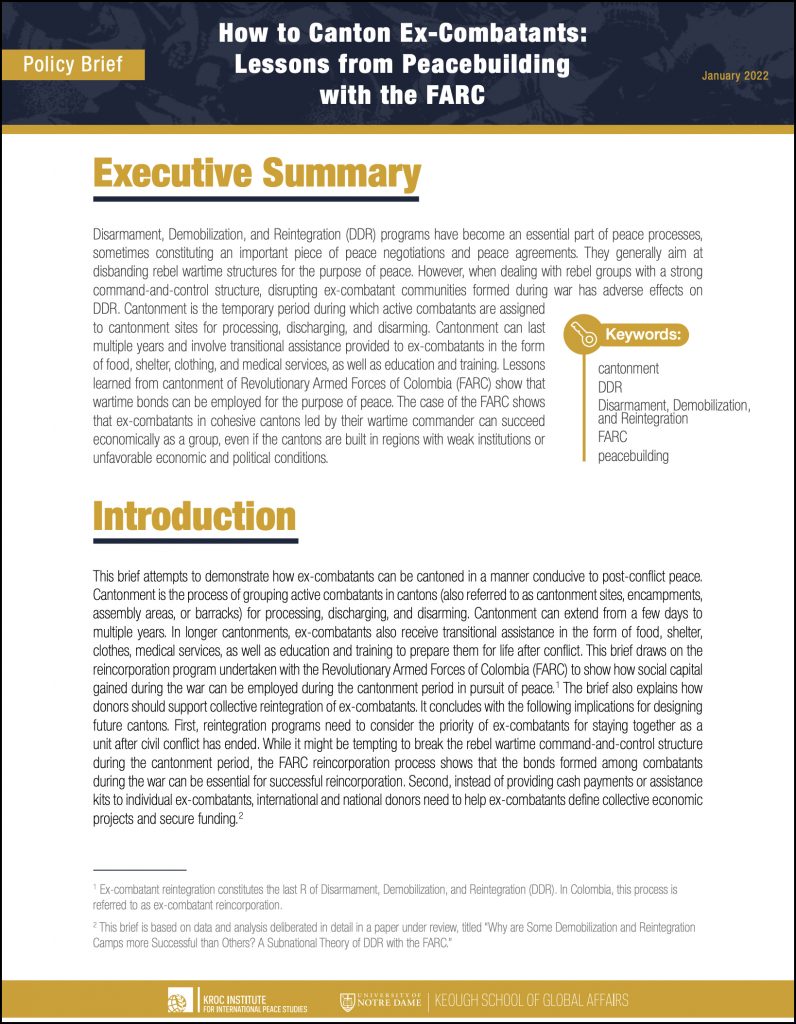How to Canton Ex-Combatants: Lessons from Peacebuilding with the FARC
Author: Sally Sharif
Publication info: Kroc Institute for International Peace Studies, Keough School of Global Affairs, January 2022
Full text: Read this brief at curate.nd.edu
Abstract
Disarmament, Demobilization, and Reintegration (DDR) programs have become an essential part of peace processes, sometimes constituting an important piece of peace negotiations and peace agreements. They generally aim at disbanding rebel wartime structures for the purpose of peace. However, when dealing with rebel groups with a strong command-and-control structure, disrupting ex-combatant communities formed during war has adverse effects on DDR. Cantonment is the temporary period during which active combatants are assigned to cantonment sites for processing, discharging, and disarmament. Cantonment can last multiple years and involve transitional assistance provided to ex-combatants in the form of food, shelter, clothing, and medical services, as well as education and training. Lessons learned from cantonment of Revolutionary Armed Forces of Colombia (FARC) show that wartime bonds can be employed for the purpose of peace. The case of the FARC shows that ex-combatants in cohesive cantons led by their wartime commander can succeed economically as a group, even if the cantons are built in regions with weak institutions or unfavorable economic and political conditions
Recommended citation
Sharif, Sally. How to Canton Ex-Combatants: Lessons from Peacebuilding with the FARC. Peace Accords Matrix Policy Brief Series. South Bend, IN: Kroc Institute for International Peace Studies, Keough School of Global Affairs, University of Notre Dame, 2022. https://doi.org/10.7274/np193775f86
